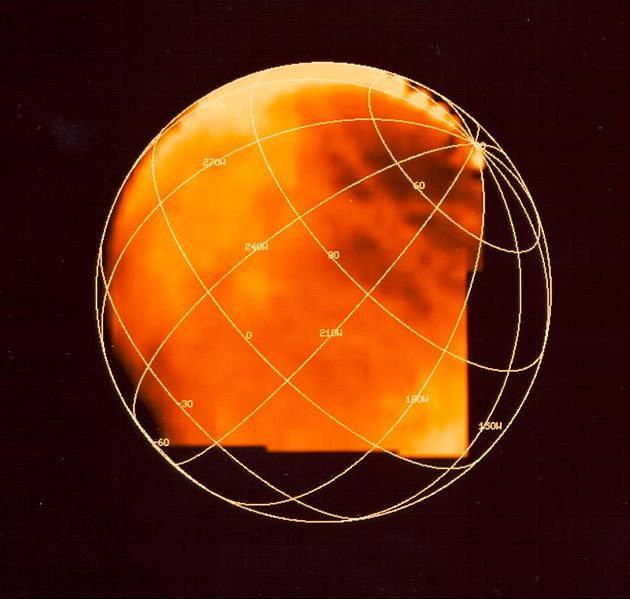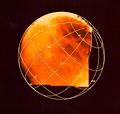Summary
Grid of Europa showing sulfuric acid finds.
Original caption
Frozen sulfuric acid on Jupiter's moon Europa is depicted in this image produced from data gathered by NASA's Galileo spacecraft. The brightest areas, where the yellow is most intense, represent regions of high frozen sulfuric acid concentration. Sulfuric acid is found in battery acid and in Earth's acid rain.
This image is based on data gathered by Galileo's near infrared mapping spectrometer.
Europa's leading hemisphere is toward the bottom right, and there are enhanced concentrations of sulfuric acid in the trailing side of Europa(the upper left side of the image). This is the face of Europa that is struck by sulfur ions coming from Jupiter's innermost moon, Io. The long, narrow features that crisscross Europa also show sulfuric acid that may be from sulfurous material extruded in cracks.
Galileo, launched in 1989, has been orbiting Jupiter and its moons since December 1995. JPL manages the Galileo mission for NASA's Office of Space Science, Washington DC. JPL is a division of the California Institute of Technology, Pasadena, CA.
Copyright status
This image is served on a site belonging to NASA and the Jet Propulsion Laboratory. Per JPL/NASA policy and applicable United States federal law, such images are in the public domain, or, if they are owned by individuals or institutions other than NASA or JPL, may be used for any journalistic, educational, or personal purpose (but not a commercial purpose) without further authorization. NASA and JPL images, other than their respective institutional logos, or photographs of actual persons, are not subject to copyright and may be used without additional permission, unless otherwise declared. For details, see the JPL Image Use Policy Declaration.
Source

